This was published 8 years ago
Soweto, Mandela House, Apartheid Museum: Johannesburg's most infamous urban township
By Daniel Scott
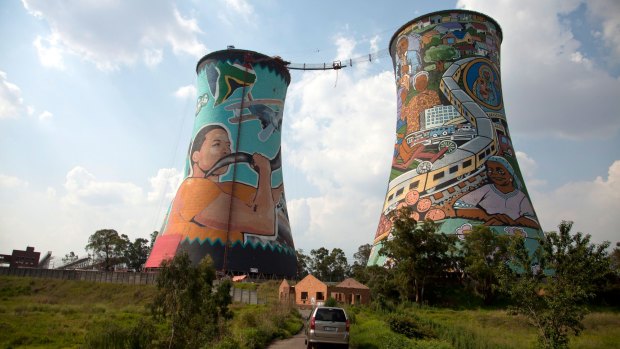
The brightly painted cooling towers of the Orlando Power Station in Soweto.Credit: Alamy
It would be hard to name a more globally significant and respected human being than Nelson Mandela.
Wherever you come from in the world, if you're over 35, the television images of his "long walk to freedom" on February 11, 1990, after 27 years of imprisonment, will remain with you forever.
For those, like me, that campaigned against the apartheid regime from afar, Mandela and others like Steve Biko, murdered by South African police in 1977, provided a focal point for the struggle against institutionalised racism.
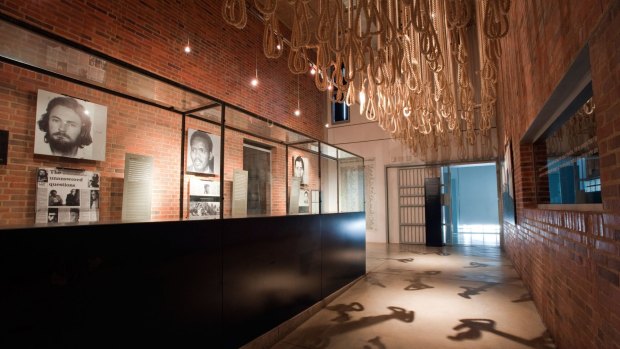
The Apartheid Museum in Soweto.Credit: Alamy
We even had a rallying cry in honour of the great man, the catchy 1984 pop song Free Nelson Mandela, by British band The Special A.K.A, that allowed us to spit righteous chips while smashing it on the dance floor:
"21 years in captivity
Shoes too small to fit his feet
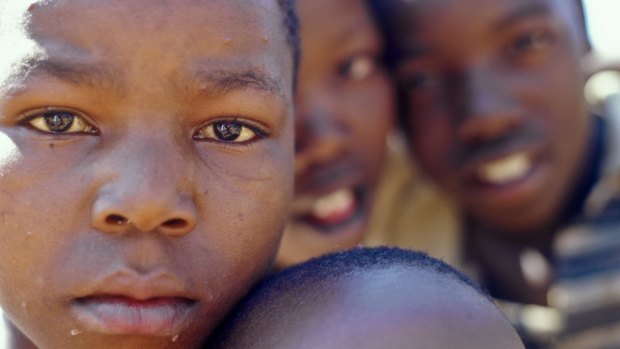
Children in Soweto.Credit: Alamy
His body abused
But his mind still free...
Free-eee Nelson Mandela."
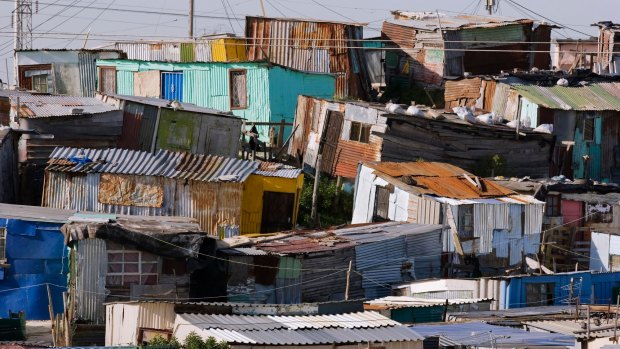
Shanty houses in Soweto.Credit: Alamy
Wind forward three history-packed decades and I am standing in the house that the Nobel Peace Prize winner called "home", on and off, for 45 years before imprisonment, and for 11 days after.
Beside me is guide Katekami Siweja, an impressive young student who epitomises the new South Africa that Mandela helped to shape, after becoming president, in the country's first free elections in 1994.
"Did you ever meet him?" I ask her as she shows me around the unprepossessing red brick edifice in Orlando West, considered the Beverley Hills of Soweto, Johannesburg's most infamous, densely populated township.
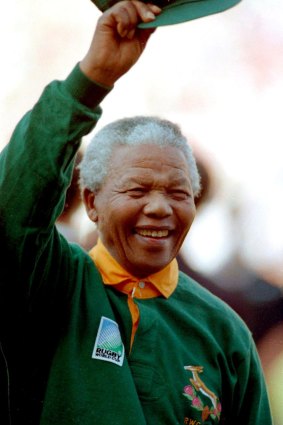
A video showing Nelson Mandela wearing a Springbok rugby jersey at the 1995 Rugby World Cup final gave the writer his biggest goosebump moment at the Apartheid Museum in Johannesburg.Credit: Alamy
"Yes, he was very friendly," she replies, "he even wrote to me before he died saying 'good luck with your education'."
While I understand the arguments against doing slum or township tours, I can't imagine a better way of spending time in Jo'berg than by being shown around Soweto, on the city's south-western fringes, by a local.
So far I've felt no sense of sticky-beaking on the dispossessed, my social heart has been stirred but isn't bleeding and there's been no sense of danger in an area once considered the murder capital of the world.
"Violence was part of growing up in Soweto," says my tour guide Theo Mlambo, who has lived all his life in what he calls a "matchstick house", "but the murder rate has now dropped by 5 per cent".
"12 o'clock and as far as the eye can see," says Mlambo, stopping at a vantage point, "is Soweto".
One of the many urban settlements engineered to segregate blacks from whites, Soweto was created in the 1930s.
According to a 2011 census, it now covers 200,000 square kilometres and is home to 1.27 million people, 98.5 per cent of which are black. The population density is a staggering 6357 inhabitants a square kilometre.
"Modern South Africa was built on the sacrifices of Soweto," says Mlambo, "of those who toiled in the nearby coal mines."
We've just passed the colourfully painted cooling towers of the now-defunct Orlando power station, which once provided power to other parts of Johannesburg while Soweto went without electricity.
Nor was the township afforded any public transport, meaning that up to 36,000 mini buses now beetle around it, providing vital links.
It is not until we stop, at Motsoaledi squatter camp, that I fully grasp the poverty that engulfs Soweto. I get out of the van and survey row upon row of wooden shacks encased in corrugated iron.
Sitting outside one is Kevin Moglantsi, who has lived in this one room, no bigger than the average Australian bathroom, for 22 years, with his wife and two children.
"My wife and I share the bed," Moglantsi tells me, "and my children sleep on the floor, it's not much but I haven't had work for nine years."
The battle against apartheid rule, enshrined in legislation in 1948, with Afrikaans decreed the principal language of instruction in schools, was long and arduous, but, like Mandela, the people of Soweto were instrumental in its demise.
In June 1976, student uprisings in the township, violently quelled by police and killing scores, including 12-year-old Hector Pieterson, brought world attention to the viciousness of the white regime. The massacres are movingly commemorated in an Orlando West museum, named after Pieterson, whose limp body is pictured on a billboard outside, being carried by a friend, as his distraught sister rushes alongside.
Elsewhere in Johannesburg, the Apartheid Museum, built in 2001 alongside the Gold Reef City Casino, shines further light on South African history, stretching back 2500 years.
Depending on the card allocated to them at the gate, visitors enter the stark prison-like building through turnstiles marked "whites" or "non-whites" and progress through an illuminating chronology of apartheid. The displays track decades of race classification and political detention – prison cells and solitary confinement are reconstructed – and the rise of black consciousness and armed struggle.
The museum also includes a temporary exhibition entitled Mandela – leader, comrade, negotiator, prisoner, statesman that provides layered insights into the man who went on to be christened "Madiba" or "father" of modern South Africa.
For me, it is video of Mandela, appearing in a Springbok shirt, at the Rugby World Cup final at Ellis Park in 1995, that provides the biggest goosebump moment.
"It was a defining moment in the history of our country," recalls Archbishop Desmond Tutu, and my guide Mlambo agrees.
"Rugby was the white man's game, 95 per cent of the crowd that day was white" says soccer-mad Mlambo, "and the springbok was a symbol of oppression. He was putting on the enemy's jersey and embracing all South Africans.
"Mandela made us realise," he continues, "that the Rainbow Nation was not such a dream."
It has been a poignant day getting close to this uncommonly compassionate and visionary leader, whose death, on December 13, 2013, was mourned across the world and, recognising, by visiting Soweto, that South Africa still has many iniquities and problems to address.
Mandela foresaw that as well.
"I have discovered the secret," he once said, "that after climbing a great hill one only finds there are way more hills to climb."
Daniel Scott was a guest of the Africa Safari Company.
TRIP NOTES
MORE INFORMATION
GETTING THERE
Qantas has six flights a week from Sydney to Johannesburg, from $1450 return; see qantas.com.au.
TOURING THERE
The Soweto and Apartheid Museum Tour costs $150 and can be booked in Australia through the Africa Safari Company. Mandela House (8115 Vilakazi Street, Orlando West, Soweto) is open daily 9am-5pm, entry is $5 for adults; see mandelahouse.org. The Apartheid Museum (Northern Parkway and Gold Reef Road, Ormonde) is open daily 9am-5pm, entry is $6.50 for adults; see apartheidmuseum.org.
Sign up for the Traveller Deals newsletter
Get exclusive travel deals delivered straight to your inbox. Sign up now.